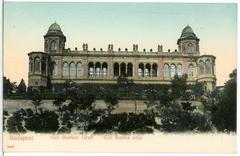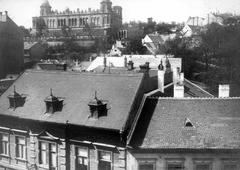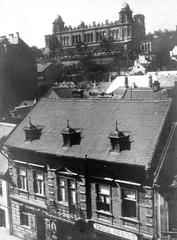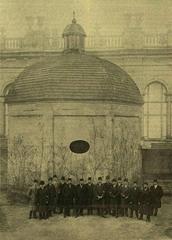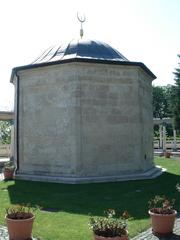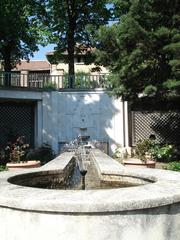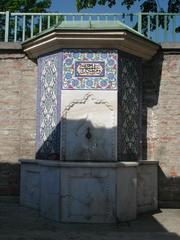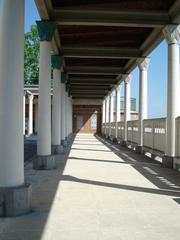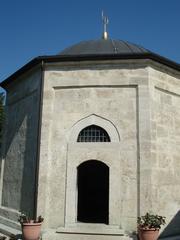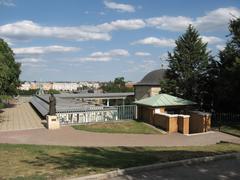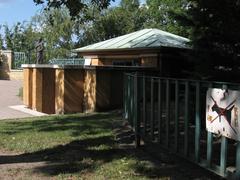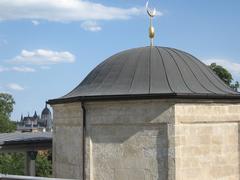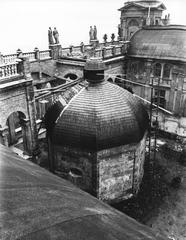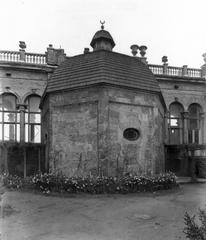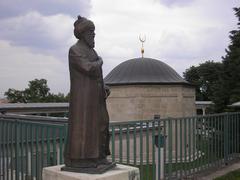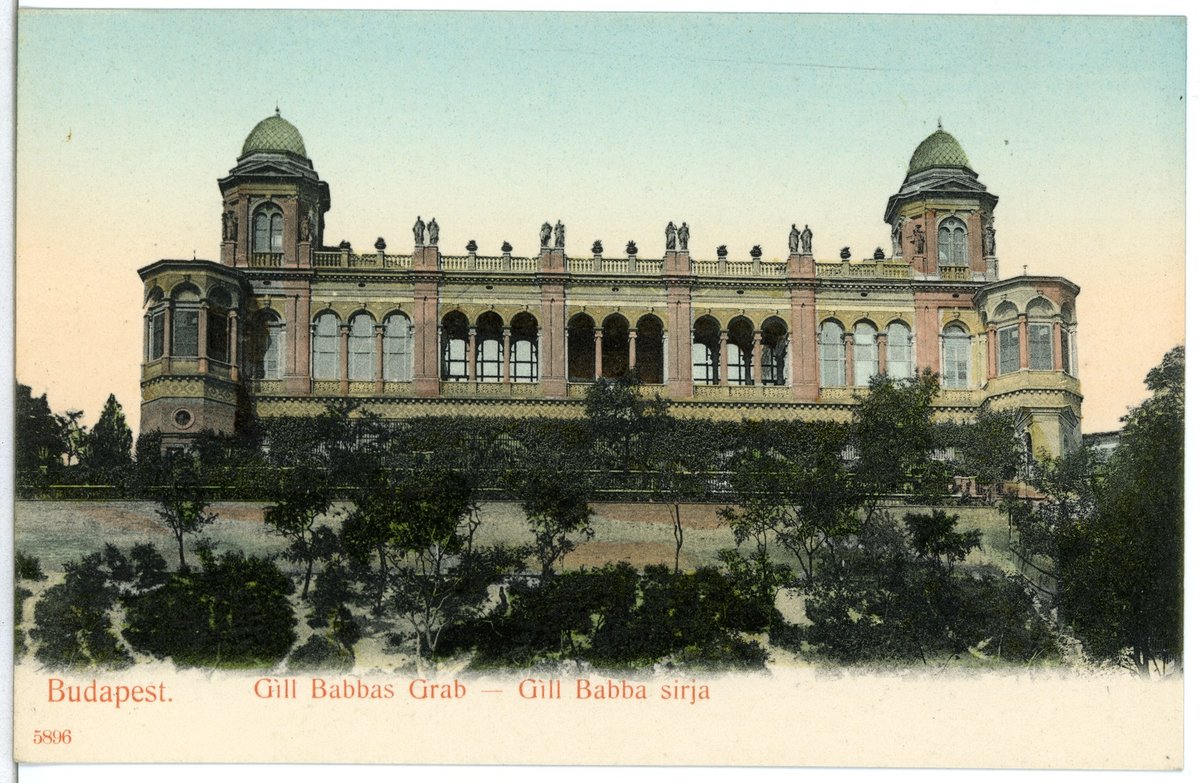
Visiting the Tomb of Gül Baba, Budapest: Complete Guide to History, Tickets, Hours, and Travel Tips
Date: 14/06/2025
Introduction: Gül Baba’s Tomb – Where Ottoman and Hungarian Heritage Meet
Perched atop Rózsadomb (“Rose Hill”) in Budapest, the Tomb of Gül Baba is a distinctive monument that bridges Ottoman, Islamic, and Hungarian culture. As Europe’s northernmost Islamic pilgrimage site, it offers an evocative journey into 16th-century Ottoman history, Sufi mysticism, and centuries of cultural coexistence. Gül Baba—known as the “Father of Roses”—was a Bektashi dervish, poet, and spiritual leader who arrived with Sultan Suleiman the Magnificent during the Ottoman conquest of Buda in 1541. His tomb, erected soon after his death, remains a powerful symbol of Ottoman influence and Hungarian-Turkish friendship.
Visitors to Gül Baba’s Tomb can admire the octagonal türbe, stroll through fragrant rose gardens, and enjoy sweeping vistas over the Danube and Budapest’s landmarks. Recent restorations and the stewardship of the Gül Baba Tomb Heritage Foundation have transformed the site into a vibrant cultural center, complete with exhibitions, guided tours, and special events.
This comprehensive guide details the tomb’s history, architectural highlights, visiting hours and ticketing, accessibility, travel tips, and suggestions for nearby attractions—making it essential reading for history buffs, pilgrims, and curious travelers alike.
Contents
- History and Cultural Significance
- Architectural Features
- Visiting Information: Hours, Tickets, Accessibility
- How to Get There and Site Layout
- Tips, Etiquette, and Nearby Attractions
- Events, Exhibitions, and Guided Tours
- Frequently Asked Questions
- Conclusion & Planning Resources
- Sources and Further Reading
History and Cultural Significance
Gül Baba: The “Father of Roses”
Gül Baba was an esteemed Bektashi dervish, poet, and mystic who accompanied the Ottoman army during the 1541 conquest of Buda (budapestconnection.com). Renowned for his spirituality and wisdom, he became a legendary figure in Ottoman Hungary. He reportedly died during the first Friday prayer in the newly converted mosque (formerly Matthias Church), an event so significant that Sultan Suleiman the Magnificent himself is said to have attended his funeral (budapestconnection.com). Gül Baba’s legacy as a spiritual guide and symbol of interfaith harmony endures to this day.
Construction and Ottoman Era
The tomb (türbe) was built shortly after Gül Baba’s death, likely in the 1540s, and became a prominent site for Muslim pilgrims. The structure exemplifies Ottoman funerary architecture and was once part of a dervish monastery (budapest.com). Under Ottoman rule, the Bektashi order fostered religious and cultural exchange, and the rose gardens surrounding the tomb inspired the area’s name, Rózsadomb (budapestconnection.com).
Post-Ottoman Transformations
After the Habsburg reconquest in 1686, the tomb survived while the monastery was dissolved. The Jesuits converted the türbe into a Catholic chapel, a role it retained for almost two centuries (visithungary.com). In the 19th century, architect János Wagner integrated the tomb into his villa, and subsequent Ottoman-funded restorations preserved its original features (gulbabaalapitvany.hu).
Recent Restorations and Cultural Revival
Major restorations between 2016–2018 revitalized the site, with renewed focus on historical preservation and accessibility. Today, the Gül Baba Tomb Heritage Foundation manages the complex, organizing events that celebrate Hungarian–Turkish friendship (budapest.city).
Architectural Features
The Octagonal Tomb (Türbe)
The türbe is a striking example of 16th-century Ottoman design, with an octagonal ground plan and a shallow dome supported by stone and brick walls (dailynewshungary.com). The entrance is marked by a simple arched doorway, and inside, the sarcophagus—draped in green cloth and crowned with a turban—marks Gül Baba’s final resting place. Natural light filters through arched windows, creating a tranquil space for reflection.
Rose Gardens and Terraces
Surrounding the tomb, the landscaped gardens are planted with hundreds of rose bushes, a tribute to Gül Baba’s legendary association with the flower (hungaryunlocked.com). The terraced layout, winding paths, and benches invite visitors to relax and enjoy panoramic views of Budapest and the Danube River.
Visitors’ Center and Facilities
The restored Wagner villa now houses a visitor center with exhibitions on Gül Baba, the Bektashi order, and Ottoman-era Hungary (hungaryunlocked.com). The center features a café serving Turkish tea, a gift shop with books and handicrafts, and accessible restrooms. Informational panels in multiple languages provide historical and architectural context.
Visiting Information: Hours, Tickets, Accessibility
Visiting Hours
- April–October: Daily, 10:00 AM – 6:00 PM
- November–March: Daily, 10:00 AM – 4:00 PM
- Closed on major public holidays.
- Always confirm current hours on the official website.
Tickets and Admission
- Admission: Free of charge; donations are welcome to support ongoing preservation.
- Guided tours: Available in Hungarian, English, and Turkish (booking recommended for groups).
Accessibility
- The site is accessible for visitors with limited mobility; main paths are paved, and ramps are provided.
- Some terraces and gardens have steps; assistance can be arranged if needed.
How to Get There and Site Layout
Location
- Address: Mecset utca 14, Budapest, District II (Rózsadomb)
- Main entrance: Türbe tér 1
Directions
- By foot: From Margaret Bridge, walk up Mecset utca (Mosque Street) for a scenic approach.
- By public transport: Bus 8A from Széll Kálmán tér metro station (15 minutes), followed by a 10-minute uphill walk.
- By car: Limited parking is available in the residential neighborhood nearby.
On Site
- The entrance terrace offers sweeping city views and is the site for cultural events.
- The tomb is set slightly above the gardens, accessed by a short flight of steps.
- The visitors’ center, exhibition hall, gift shop, and café are adjacent to the tomb.
Tips, Etiquette, and Nearby Attractions
Visitor Tips
- Dress modestly out of respect for the tomb’s religious significance.
- Best photography: Early morning and late afternoon provide the most atmospheric light; the eastern terrace is ideal for capturing Danube panoramas and Parliament views.
- Recommended visit duration: 45–90 minutes.
Etiquette
- Speak quietly and be respectful, especially if religious services are taking place.
- Photography is permitted; avoid using flash or disturbing worshippers.
Nearby Attractions
- Mansfeld Péter Park: A peaceful spot with city views, just steps away.
- Buda Castle District: Home to Buda Castle, Matthias Church, and Fisherman’s Bastion.
- Margaret Island: Popular for walking, cycling, and relaxation on the Danube.
Events, Exhibitions, and Guided Tours
- The site hosts regular cultural events, exhibitions, and lectures on Ottoman-Hungarian history.
- Guided tours delve into the site’s history, architecture, and the life of Gül Baba.
- For schedules, check the official Gül Baba Tomb Heritage Foundation website.
Frequently Asked Questions
Q: What are the current visiting hours for the Tomb of Gül Baba?
A: April–October: 10:00 AM – 6:00 PM; November–March: 10:00 AM – 4:00 PM. Closed on major holidays.
Q: Is there an entrance fee or ticket required?
A: No, admission is free for all visitors.
Q: Are guided tours offered?
A: Yes, in Hungarian, English, and Turkish. Booking is advised for groups.
Q: Is the site wheelchair accessible?
A: The main paths are accessible, though some garden terraces have steps.
Q: Can I take photographs inside the tomb?
A: Yes, but please avoid flash and be considerate of worshippers.
Q: When are the roses in bloom?
A: Late spring and early summer are the best times to see the gardens at their most vibrant.
Conclusion & Planning Resources
The Tomb of Gül Baba is a serene haven where Hungarian and Turkish traditions converge. Its octagonal mausoleum, lush rose gardens, and panoramic city views make it a highlight among Budapest’s historical sites. With free entry, modern visitor amenities, and thoughtful preservation, it welcomes all who seek spiritual reflection or cultural discovery.
Plan ahead by checking official hours, considering a guided tour, and allowing time to explore the gardens and nearby attractions. Engage with the site through respectful visitation, photography, and participation in cultural events.
For up-to-date information, guided tours, and in-depth historical context, visit the official Gül Baba Tomb Heritage Foundation website, Budapest City Tourism, and Budapest Connection.
Don’t forget to download the Audiala app for guided tours, travel tips, and exclusive content about Budapest’s rich historical landscape.
Sources and Further Reading
- Gül Baba Tomb Budapest: History, Visiting Hours, Tickets & Travel Guide
- Gül Baba’s Tomb in Budapest: Visiting Hours, Tickets, and Cultural Significance of This Historic Ottoman Site
- Visiting the Tomb of Gül Baba: Hours, Tickets, and Guide to Budapest’s Historic Ottoman Mausoleum
- Tomb of Gül Baba Visiting Hours, Tickets & Guide to Budapest Historical Sites
- Official Gül Baba Tomb Heritage Foundation
- Budapest City Tourism
- Visit Hungary
